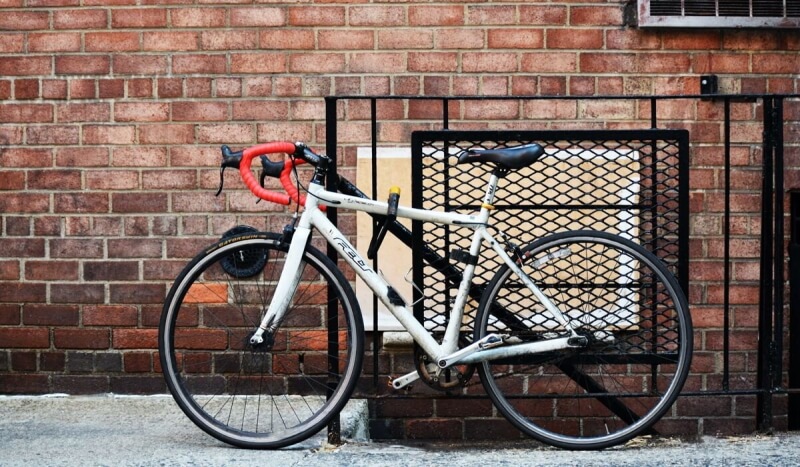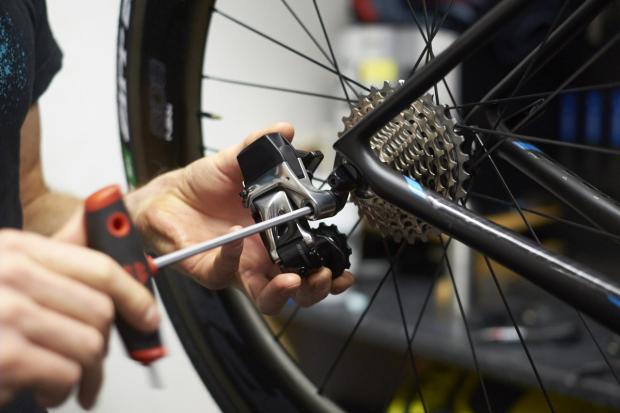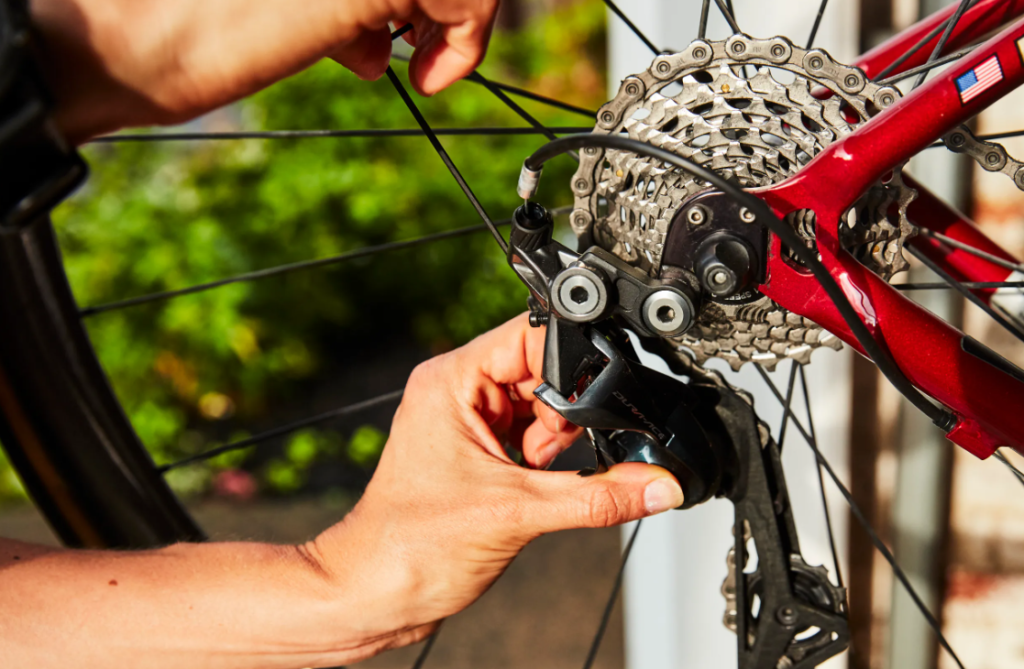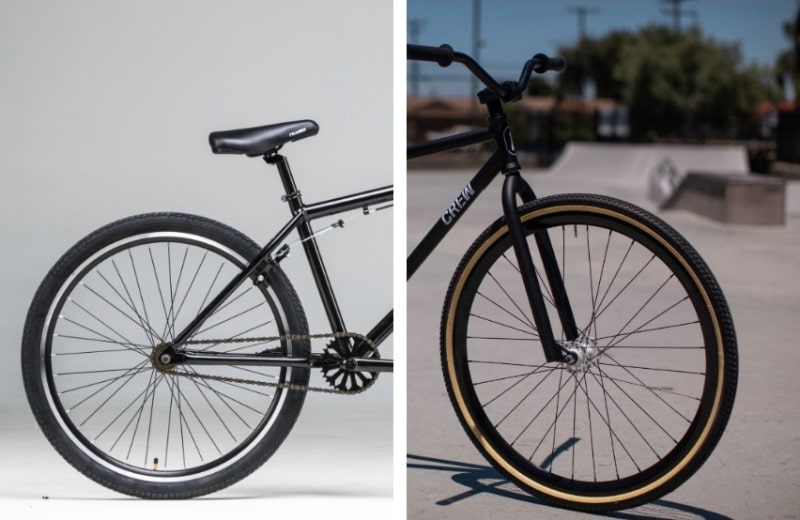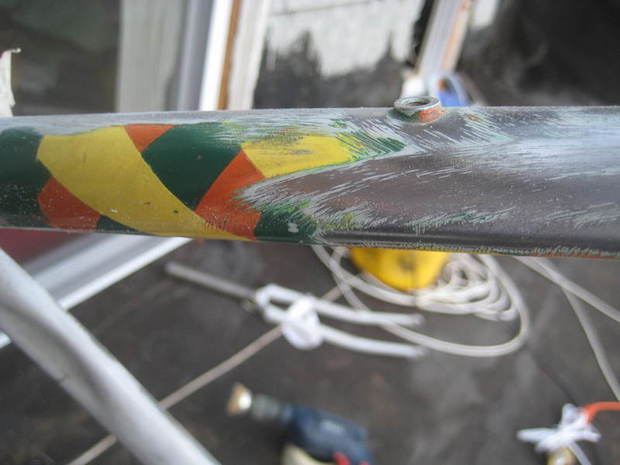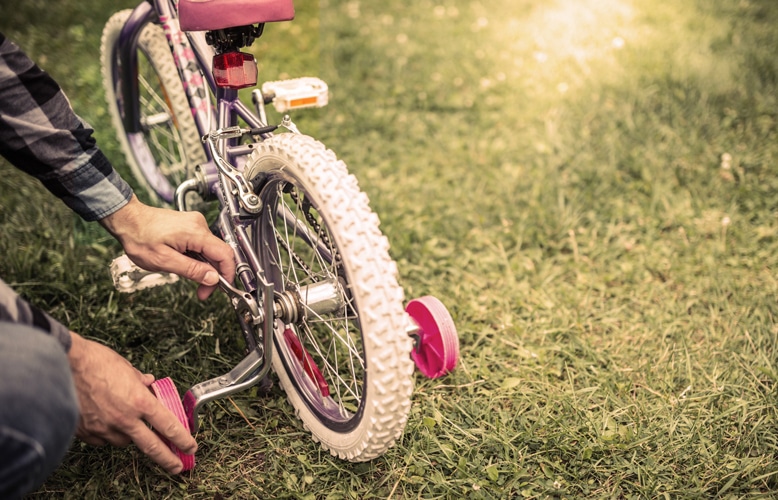- Trails
-
Bikes
-
Gear
-
Tips & Tricks
-
About us


If you’re riding and you notice a wobbly bike wheel, this is a sure sign that something is wrong. This is especially unnerving for newer riders that are out on the open road. If the rear bicycle wheel wobbles from side to side, this could be caused by a number of problems, including an overheated hub, a broken axle, a wheel that’s out of alignment, damaged spokes, or a flaw in the tire that needs a repair or replacement. Learning how to diagnose and fix bike wheel wobble is easier than you might imagine. In fact, in many cases, it can be prevented to make your next ride more comfortable and safer.
If the rear or front bike wheel wobbles side to side, there are two possible causes. First, the wheel could be out of true, because it’s slightly buckled. Second, the cup and cone bearings in the wheel may be loose and cause lateral movement.
If either wheel is wobbly at the 0 and 180 positions, the tire will have a barely perceptible oval shape. This will make the wheel rotation buckled and untrue, and this is common on bikes with spokes that are tightened more on one side than the other.
There are many reasons for a bike’s front wheel wobble, but when you learn to spot and fix bike wheel problems life is much easier.
If you experience mild bike rear wheel wobble during each turn of the wheel, the spokes Trusted Source Bicycle Spokes - Materials Engineering - Purdue University Spokes are the connecting rods between the bicycle hub and the rim. Their main purpose is to transfer the loads between the hub and the rim, which are caused by the weight of the rider and the bike. engineering.purdue.edu may be the cause. These thin strands of wire stretch and compress repeatedly to keep the wheel running smoothly. This is impressive when you consider that those wires are supporting the entire weight of a loaded bike. Check for missing spokes and for equal spoke tension on both sides of the wheel. It can take some time to keep them equally tight and over-tightening should be avoided to prevent spoke nipple and hub flange damage.
If you notice a very wobbly front bike wheel this is usually caused by a bent rim or wheel that’s creating a vibration that you feel at the front set. A bent or damaged rim can cause uneven tire contact, which wears out the tire grip fast. If the back bike wheel wobbles dramatically, this is a sure sign that the wheel is damaged from an impact or collision. If the wheel cannot be repaired you may want to consider a solid budget wheel to replace it such as the Wheel Master 26″ wheel which has 36 spokes.
It’s important to learn how to measure bike wheel properly, which we’ve covered in our guide. Yet many people don’t pay as much attention to their tires. This is unfortunate; even if you have excellent high-quality wheels such as the ICAN 700C G24/G25 wheelset they won’t do you much good if they are improperly inflated.
Low tire pressure is a common cause of wobbling and shaking. To prevent this, it’s important to follow the recommended tire pressure range carefully. Tires that are very worn or frequently punctured are prone to high or low-speed vibrations too. The rear tire is especially prone to these problems because it carries weight and the force of pedaling. To ensure that the bike is easy to control and stable, check the tire pressures before each ride.
The wheel debate may continue, which we cover in more detail in our 26 vs 700c guide.
But, a bent axle will affect any wheel leading to spinning out and/or wobbling as you ride. The axle is the only connection between the wheel and the bike, and it must be straight and secure. An impact with a curb, pothole, or another hard obstacle can bend the axle. This will be obvious if you take a tight turn because there is no balancing weight along the rear of the frame. Riding with a bent axle is uncomfortable and dangerous and the wheel must be changed.
There are a few ways to tell if the hub is loose:
The hub becomes loose when the bearings wander inside.
If the handlebars are loose, it can make the entire bike feel unstable. This is easy to fix, check and tighten the bolts that clamp the handlebar to the stem with a hex wrench. Don’t overtighten the bolts and if the wobbling continues the stem may be damaged or worn out.
A cup-and-cone hub is the most common hub type used in bike wheels. It’s a threaded conical nut on the axle with a cup cast on the hub shell. The two parts are separated with steel ball bearings, which can be compressed if the cones are too tight. To avoid premature wear it’s important to ensure that the cones are fully screwed in place. When the wheels will have too much freedom to move on the axis they wobble which makes the bike unstable.
When you have front and rear bike tire wobble, there are three ways to fix the problem:
Even they can be prone to
wheel spoke problems
Trusted Source
Bicycle Wheel Spoke Patterns and Spoke Fatigue
The radial, lateral, and tangential stiffness of spoked bicycle wheels depends upon the rim’s bending inertia,
torsional inertia, the spoke sizes, and the spoke geometry.
people.duke.edu
. We’ve covered the best gravel bikes under $500 in our guide, but it is still important to check the tension of your wheel spokes. The tension must be correct to prevent wobble, maintain the tire and improve the tire’s durability. To tighten the wheel spokes, you will need: a spoke tension meter, a spoke wrench, and a wheel truing stand.
First, measure the spoke diameter with a spoke diameter gauge to find the smallest slot that fits the spoke. A tension meter should have a conversion chart that’s used to calculate the spoke tension for the diameter. A lighter rim needs less tension and vice versa. If you’re in doubt, check with the wheel manufacturer for tension variations.
Hold the tension meter horizontally, place the spoke between the posts, squeeze the handle, and release. Look at the meter measurements and cross-reference the reading on the conversion chart to find the present spoke tension. Every spoke must be checked to find out if the current spoke tension is too low or too high. Spoke tension can vary a little, and a 20% difference is a good benchmark.
Turn the wheel a quarter turn counterclockwise, adjust the tension, and mature it again. When it’s in the acceptable range all around the wheel, you have a true wheel.
The rims on the road, mountain, single-speed, and fixed-gear bike wheels are prone to damage from a wide variety of sources, including impacts, collisions, bike rack forcing, spoke breaks, and more. If the kink is significant it can strike the brake pad during wheel rotations which slows the bike. But, this is an easy fix; you will need a truing stand and a spoke wrench.
Place the bike on the truing stand or flip it over if you don’t have one. Now that you can spin the wheel easily, it’s time to look for broken spokes that must be replaced. Ensure that the axle is in the dropouts, and you can ignore this if you have quick-release wheels. If the axle is not straight you don’t need to retrue the rim, but you should check the brakes to ensure that they are not damaged and that the brake cables are not tangled.
To check the alignment, rotate the wheel and check the gap between the wheel and brake pad. If you notice variations in the gap size, you have a buckled wheel.
You will find the part of the wheel rim that hits the brake pan, and if you tighten the spokes in the opposite direction of the bend, you may fix the problem quickly. If the rim tugs left, tighten the spokes on the right of the hub close to the center of the buckle and vice versa. When the spokes are tightened, the rim is pulled away from the bend side, and it can come back into alignment.
Use an appropriately sized wrench that fits the nipple of the spoke you need to tighten. To tighten, turn counterclockwise, and you may notice a plucking noise. Make another full turn to get a second pluck, and listen closely to the sound. If the pitch is higher, the spoke is tighter, and if the pitch is lower, the spoke is looser.
You can continue to adjust the spokes if you feel that the wheel needs further adjustment. Rotate the wheel, check the results, and squeeze each pair of spokes to get even gaps and no dents or dings on the rim. If more than five spoke wrench turns are required there is a good chance that the wheel is damaged and a replacement is necessary.
Keep the bike steady, hold the wheel at the highest position, and give it a shake. If you hear a “clunk” sound and there is play in the wheel you need to tighten the hub. If you have press-fit cartridge bearings it may be impossible to make alterations and new bearings may be needed.
Cone nuts are common, locate the pair of nuts on the axle where the spokes connect on the hub. These are situated side by side; the outer nut locks the inner nut in place. So, you need to loosen the outer nut first, then tighten the inner nut, and then re-tighten the outer nut without disturbing the inner nut again. Then tighten the cone nuts, rotate the wheel as you hold the hub axle, and if you don’t feel binding or grating you’ve fixed the problem.
Yes, some are visible such as a long axle/derailleur mount, and less obvious differences like the hubs. The rear wheel is designed to carry more weight and support the force of pedaling, so it has a higher 20-28 spoke count. The front wheel is light in comparison with an emphasis on control with an 18-24 spoke count.
This is theoretically possible, the bike wheels are interchangeable, but it’s a bad idea. As we mentioned above, a front and rear wheel is designed to handle different pressures, and the spoke counts vary. A front wheel cannot carry as much weight as a rear wheel.
These wheels are removable with a built-in cam lever with no need for tools. This makes inspecting, transporting, and repairing easier.
Yes, if you’re riding a bike that wobbles from side to side in the rear or front wheel you will be less safe. The bike will be unstable, there may be a loss of traction, and if you’re riding fast, these problems are compounded. In extreme cases, the axle may break, and the wheel could fall off, leading to a potentially serious accident.
Wobbling issues are common when you ride bikes regularly, and they can even occur in the middle of a ride. If you experience side-to-side motion during a ride, there will be a loss of stability, and this is potentially dangerous. Even mild problems will degrade the riding experience until you inspect the cause and fix them. If you notice that you have a wobbly bike wheel, it’s important to stay calm and return home. If the problem is severe you may need some help to transport the bike home to stay safe. Adjusting spokes and hubs at the side of the road is far more complex than fixing a puncture.
